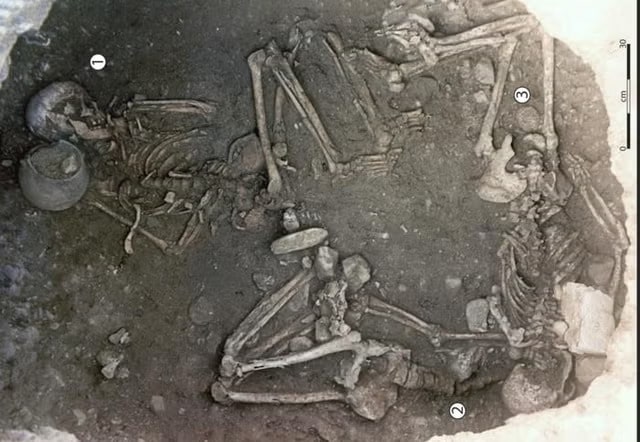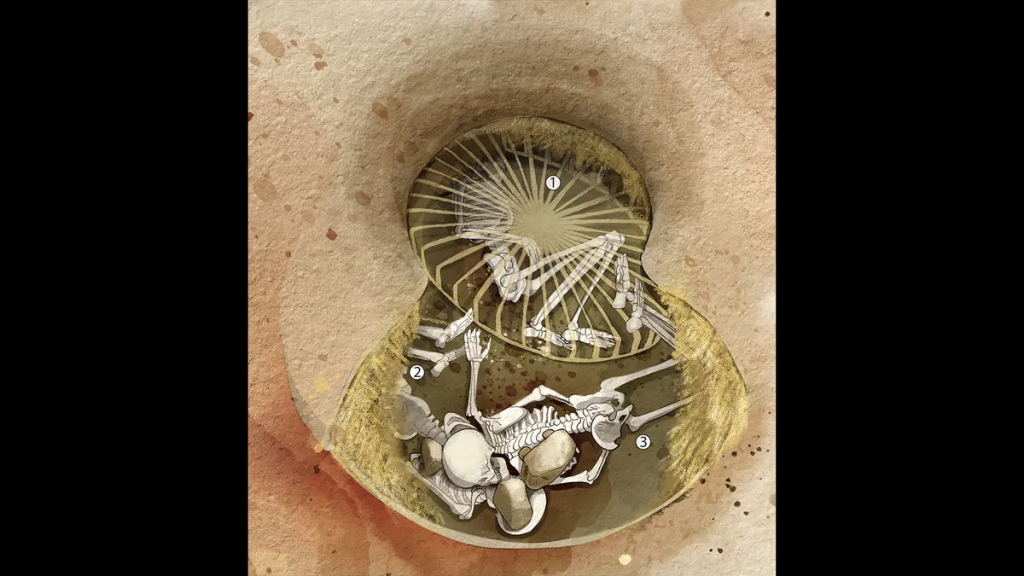
New research finds more than a dozen murders in Neolithic Europe in which women were traditionally sacrificed
New research has identified more than a dozen murders in Neolithic Europe over a 2,000-year period in which women were traditionally sacrificed.
The victims appear to have been killed by “incaprettamento”. This style of death is also known as hog-tying. The victims’ necks are tied behind their backs to their bent legs, allowing them to strangle themselves in some way.
The study follows the reassessment of an ancient tomb found more than 20 years ago at Saint-Paul-Trois-Châteaux near Avignon in southern France. Two women buried there about 5,500 years ago were buried in a tomb that resembled a silo, or pit used to store grain.
The researchers began by examining skeletons excavated at Saint-Paul-Trois-Châteaux, a Neolithic tomb. Three of the remains belonged to women who the team determined were forced into positions that caused them to suffocate; at least one of the women may have been buried alive
The team then scanned existing studies for similar cases of unusual burial practices with abnormally positioned bodies in Stone Age Europe.
The archaeologists looked for further evidence to determine whether the women’s deaths, although clearly violent, were part of a larger Neolithic tradition, possibly linked to agricultural practices.

They then evaluated the available anthropological and archaeological literature and found reports of similar burials from 14 sites from Eastern Europe to Catalonia. In addition, rock art from Sicily dating back to the even earlier Mesolithic period (Middle Stone Age) appears to depict similarly bound figures.
Further research found that when Rhône Valley victims died between 6,000 and 5,500 years ago, squeezing people’s breath was a ritualized form of murder for 2,000 years.
The study emphasizes the presence of agricultural symbolism surrounding the grave. This suggests that the sacrifice may be linked to agricultural practices during the Neolithic period (New Stone Age).
“The main challenge in archaeology, especially in prehistory where written records are absent, is to distinguish ritual sacrifice from other forms of ritualized violence,” the study authors wrote. Their research is published today in Science Advances.
According to the researchers, the practice of killing probably began as a sacrificial custom before agriculture and was later used for human sacrifice linked to farming in the Neolithic era.
This discovery offers a glimpse into a dark side of Neolithic European societies and their ritualistic practices. The study’s findings raise further questions about the motivations behind these sacrifices and their connection to the development of agriculture.
Cover Photo: View taken from the upper part of the 255 storage pit showing the three skeletons, with one individual in a central position (Woman 256 1) and the other two placed under the overhang of the wall (Woman 2 and Woman 3) Image Credit: Ludes et al., Sci. Adv. 10, eadl3374
You may also like
- A 1700-year-old statue of Pan unearthed during the excavations at Polyeuktos in İstanbul
- The granary was found in the ancient city of Sebaste, founded by the first Roman emperor Augustus
- Donalar Kale Kapı Rock Tomb or Donalar Rock Tomb
- Theater emerges as works continue in ancient city of Perinthos
- Urartian King Argishti’s bronze shield revealed the name of an unknown country
- The religious center of Lycia, the ancient city of Letoon
- Who were the Luwians?
- A new study brings a fresh perspective on the Anatolian origin of the Indo-European languages
- Perhaps the oldest thermal treatment center in the world, which has been in continuous use for 2000 years -Basilica Therma Roman Bath or King’s Daughter-
- The largest synagogue of the ancient world, located in the ancient city of Sardis, is being restored











Leave a Reply